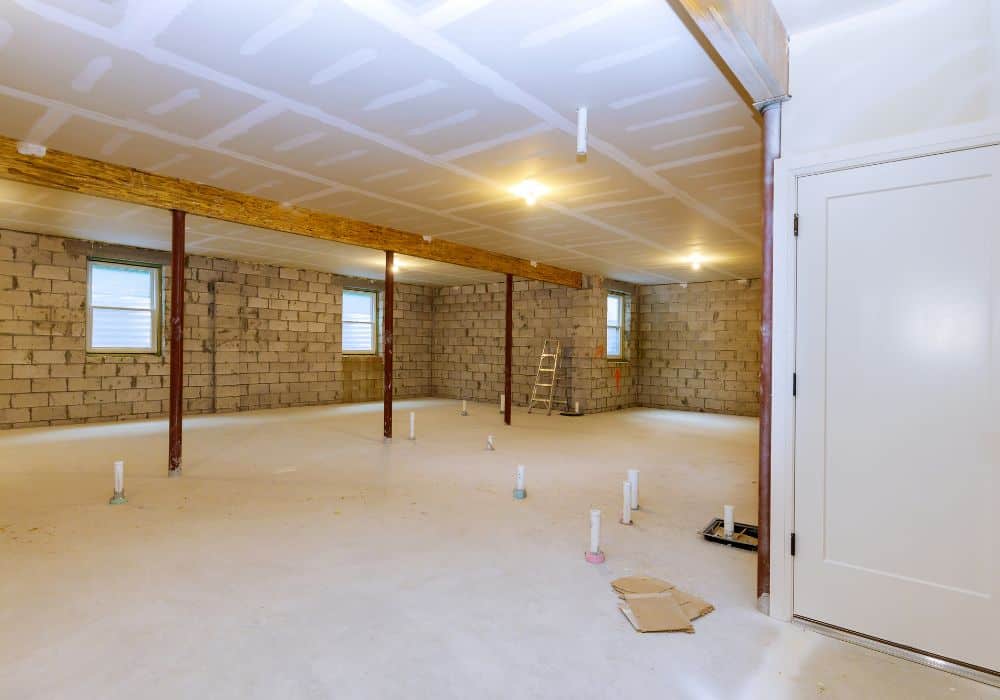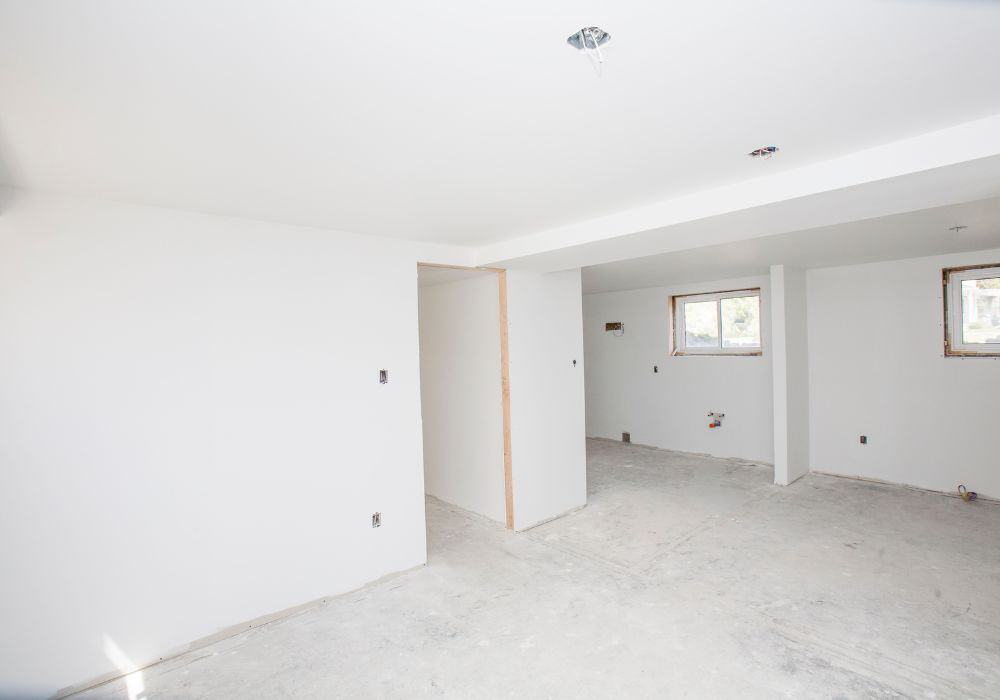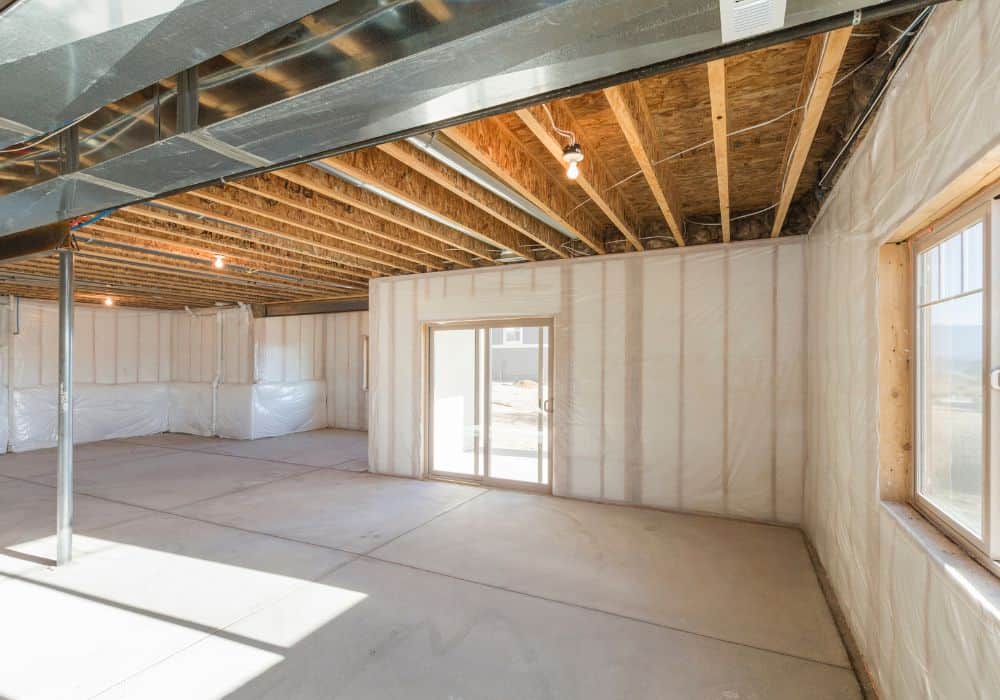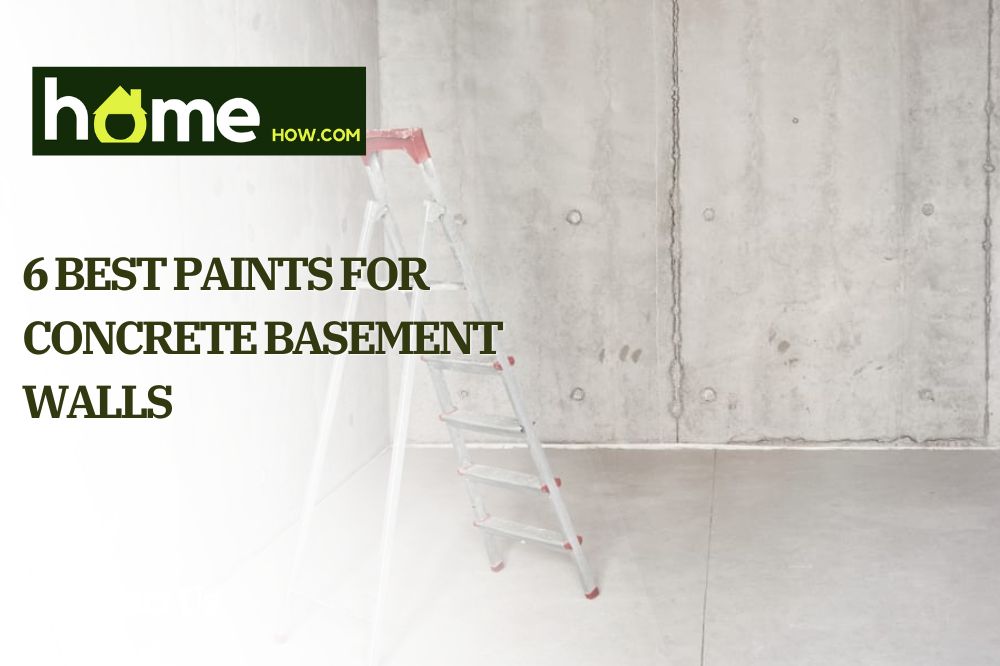Are you looking to spruce up your dark and dingy basement?
Despite being the foundation of the interior of most homes, basement walls are usually the most unwelcoming environment and often create an uninviting aesthetics.
However, a fresh coat of paint can transform your dungeon-like room into a stylish, comfortable, and relaxing space.
But remember, bringing life to concrete basement walls is a little trickier than the other rooms in your house. With the potential of cracks, mildew, and molds, you must pick the right type of paint.
Here’s an overview of what kind of paint you can use on concrete basement walls. But before that, let’s look at how you can paint concrete surfaces like basement walls.
What Kind of Paint Work Best for Concrete Basement Walls
Basement walls tend to allow moisture and humidity to seep into the space. Hence the damp nature of most basements. Because of this, you can’t use standard paints to coat these walls.
Standards paints are not designed to hold back hydrostatic pressure, meaning you can not use them in an environment with high humidity. In this context, your basement walls need a special paint that’s waterproof to keep moisture from forming between the concrete and drywall. As a result, you can prevent unnecessary mold and mildew growth in the room, plus moisture intrusion.
Below, you will discover the best paint to use on your concrete basement walls.
1. Latex Paint
Latex paints stand out because they dry quickly and emit less odor than other paints. They’re water-based, which makes them easy to apply.
Latex paints also last longer, are less likely to peel off, and give an amazing finish. And the best part is you can wash off this paint with soap and water.
Sample of the best latex paint you can use for your basement walls:
- Drylok 27512 Latex WaterProofer
Formulated to withstand up to 10 pounds of hydrostatic pressure, the Drylok 27512 Latex paint promises to preserve your basement walls. The paint fills the pores on the surface, adhering to the concrete walls to create an impenetrable barrier.
Besides being waterproof, the paint comes already mixed so you can get right into painting your walls. It also produces less odor, unlike other concrete paints.
2. Acrylic Paint

Unlike latex paint, acrylic paints are chemical based. They’re formulated when a pigment gets suspended in an acrylic polymer and acrylic resin.
Because of these chemicals, acrylic paints have great elasticity. They can expand and contract with fluctuating temperatures, which helps to reduce the amount of flaking and cracking after application.
This feature makes acrylic paints durable but also expensive. Another benefit of using this masonry paint is that it’s resistant to the sun.
Sample of the best acrylic paint you can use for your basement walls:
- INSL-X WaterBlock Acrylic Masonry Waterproofer Paint
The INSL-X Waterproof paint works great for basement walls, cinder blocks, stucco, etc. It’s fast drying and you can use it for interior and exterior concrete surfaces. In addition, it’s easy to apply and clean, plus durable.
3. Epoxy Paint
Consisting of epoxy resin and hardener, epoxy paints are super tough and durable. Besides being resistant to staining, cracking, and peeling, these paints will leave your concrete basement walls and floors with a satin finish.
However, they’re hard to apply than acrylic paints. You need to mix the resin and hardeners manually before applying the paint to the walls.
Sample of the best epoxy paint you can use for your basement walls:
- Rust Bullet DuraGrade
Rust Bullet- DuraGrade is a high-performance paint available in a wide variety of color choices. It works best for concrete surfaces, including basement walls and floors.
Like Drylok, it’s ready mixed to make the painting process hassle-free. That also means you don’t have to buy extra primer, a basecoat, or a topcoat.
What we love about this paint is its protective nature. Once applied, the paint resists chipping, scratches, and chemical, plus UV damage. It delivers great adhesion while remaining functional and beautiful.
4. Concrete Primer
Once applied, a concrete primer gets absorbed into the wall’s surface. Consequently, it creates a bond line for the main paint to adhere to the surface. If you don’t apply a primer, the paint will peel and flake over time.
Sample of the best concrete primer you can use for your basement walls:
- Rust-Oleum 276087 Mold Killing Primer
Designed to keep your interior concrete walls mold and mildew free, the Rust-Oleum primer produces less odor and can work with any topcoat. It is also easy to clean with soap and water.
5. Concrete sealer

A concrete sealer is a type of paint that shield concrete wall surfaces from corrosion, water, grease and oil stains, and damage. The paint also enhances the natural beauty of concrete while making it easier to clean.
Sample of the best concrete sealer you can use for your basement walls:
- KILZ Basement and Masonry Waterproofing Paint
You can use the KILZ Basement and Masonry paint to cover the interior and exterior of your basement walls. This high-end paint uses nanotechnology to block water infiltration while providing a long-lasting, durable and beautiful finish.
Even though it’s an effective concrete sealer, you should not use it on walls with active leaks.
- Liquid Rubber Concrete Foundation and Basement Sealant
Another paint for concrete basement walls worth checking out is the Liquid Rubber Concrete Foundation and Basement Sealant. It’s a water-based sealant that’s easy to apply and delivers a watertight seal, irrespective of the surface.
What’s even interesting, the sealant is highly flexible. It features more than 900% elongation, meaning it can adapt to temperature changes on the surface, preventing tears and cracks. You will also enjoy a smooth, protective finish.
Additionally, the sealant is safe for humans, pets, and the environment. The only downside is that the paint is not waterproof.
How To Paint Concrete Basement Walls
Step 1: Inspect Basement Walls
Before doing anything, inspect your wall for water damage, leaks, moisture, and mold growth. If you observe these conditions, hire a contractor to identify the leaks or seepage in your basement and fix it. This will help prevent this issue from recurring.
Never paint wet or moist walls because you will trap moisture and water in the wall surface, leading to further damage.
Step 2: Strip The Old Paint
Clear any furniture and other items from your basement. If the space is not well-ventilated, open the windows to promote some air circulation. Alternatively, you can install a few fans in the room and open the door to get rid of any toxic fumes in the air when stripping the walls.
Put on your safety gear and strip the old paint using a wire brush, paint scraper, and elbow grease. You don’t have to remove all the old paint, just the one on the surface. After that, sand the walls with sandpaper or sanding brick.
Step 3: Clean The Concrete

Using a clean cloth, wash every section of your wall to remove any trapped dirt, dust, and grease from the wall. A pressure washer will also help to remove mold or mildew growth and efflorescence.
Step 4: Fill In the Cracks
If you paint your walls with cracks, gaps, and pores, the damage will only worsen, and moisture will seep into your basement. Therefore, fill in the cracks with caulk or hydraulic cement.
Caulk works best for small cracks. It usually comes in a standard caulk gun that allows you to squirt the product into the cracks. For hydraulic or patching cement, a trowel or putty knife might come in handy.
Step 5: Seal Basement Walls
Apply masonry sealer or paint to the wall surface to seal off all the pores. This way, you can prevent moisture and water from leaking in, causing mold growth.
Keep in mind sealants have toxic fumes that can hurt your throat and lungs when inhaled. Therefore, keep your respirator or dust mask on.
Step 6: Priming The Area
Apply a waterproof primer to the concrete walls using a nap roller. The primer will fill any pores and prepare the wall surface for painting. Remember, the primer paint might need two to eight hours to dry.
The color of your primer will depend on the color of the main paint. For example, if you want to paint the room with a lighter color, use a white primer. A grey primer works best for dark colors like blue or red.
Step 7: Paint the walls
Once the primer dries, you can paint your basement walls. Opt for a high-quality semi-gloss paint to shield the walls from moisture.
Apply the paint to your walls using a painting brush, texture roller, or high-capacity roller. You can also use a sprayer. Leave the wall to dry for 2-6 days before applying the second coat.
After that, clean the room to remove dust from the floor. Wait for 3 days for the paint to dry before you can use the space.
How To Choose the Best Paint for Concrete Walls?
Apart from the type of paint, several other factors can help you find the perfect concrete paints for basement walls. They include:
1. Maintenance
Wall paints for concrete or block walls usually have varying maintenance requirements. Some require you to wax and polish them regularly to maintain their beautiful look, while others don’t. Therefore, it’s crucial to check whether your ideal paint offers simple maintenance.
2. Durability
Of course, when you paint your basement walls, you expect the paint to last you for several years. Select a paint that offers high durability against mechanical exposure like washability, scrubbing, and wet abrasion.
3. Cost
As for cost, the price of paints varies based on concentration. But they won’t leave a huge dent in your wallet. However, several other factors, like the composition of the paint, can affect its cost. Cheap paints often have few components and features than expensive options.
4. Color Retention
Color retention is the ability of the paint to hold rich, deeper colors. Some paints for concrete basement walls have higher color retention than others. So, look for a product whose formula or proprietary technology promises a richer, truer, and long-lasting color. Luckily, color retention quality is a number one priority for most paint manufacturers today.
5. Finish
The best finish for your basement painting project will depend on your preferences. Usually, concrete paints come in several finishes, including eggshell, satin, pearl, semi-gloss, and high gloss. Just check the paint’s label to determine which type of finish you will get.
Conclusion
Unlike other rooms in your home, the basement walls require special paint, being exposed to moisture can lead to mold and mildew growth. Therefore, the ideal paint should protect the walls from water damage, moisture, and mold.
Fortunately, there’s a wide selection of concrete paints you can choose from on the market. But keep in mind the considerations highlighted above.
Now that you know about the kinds of paint to use for your basement, use this information to make your basement more comfortable and inviting.
If you have more questions, please leave a comment below.
